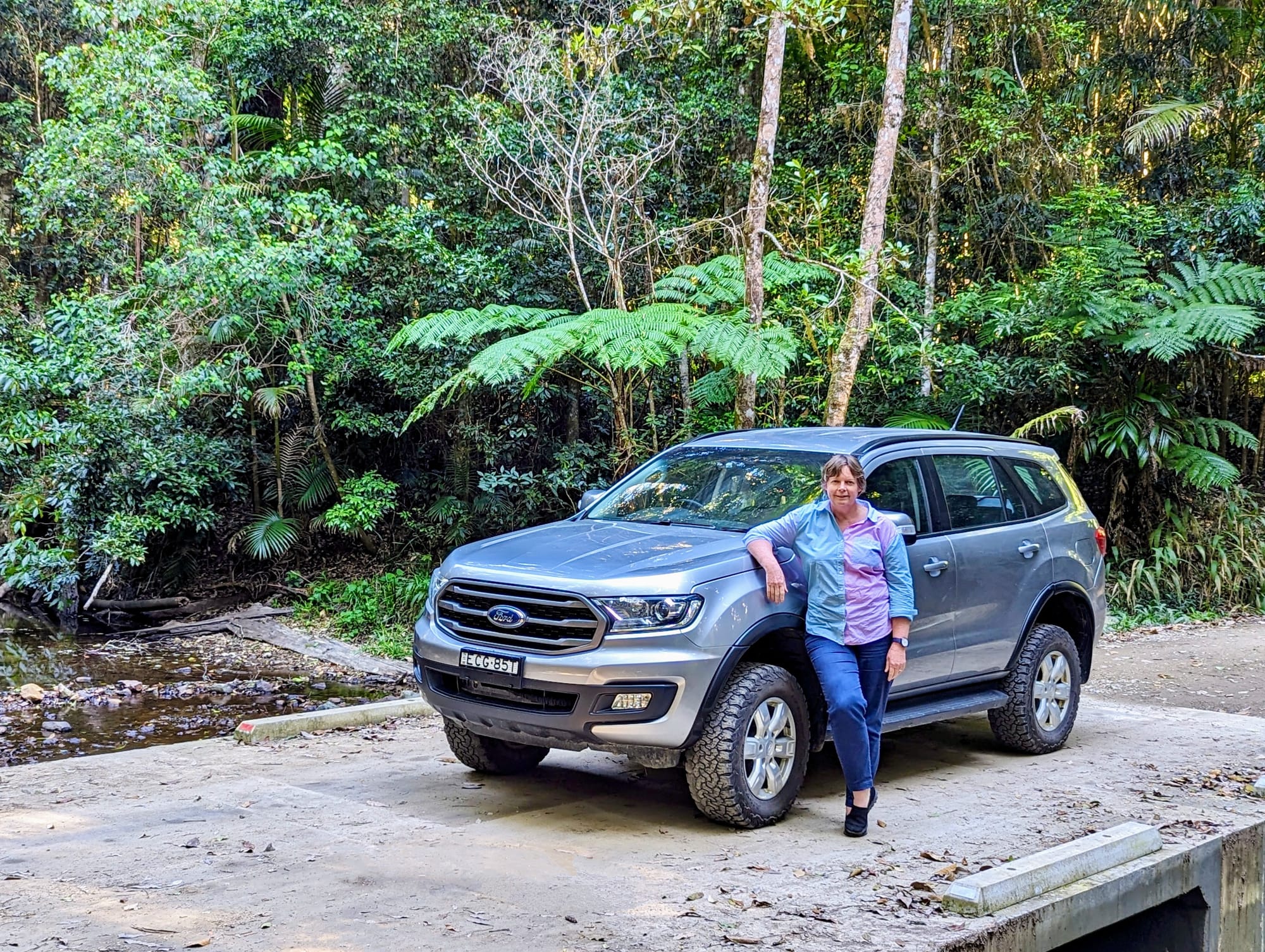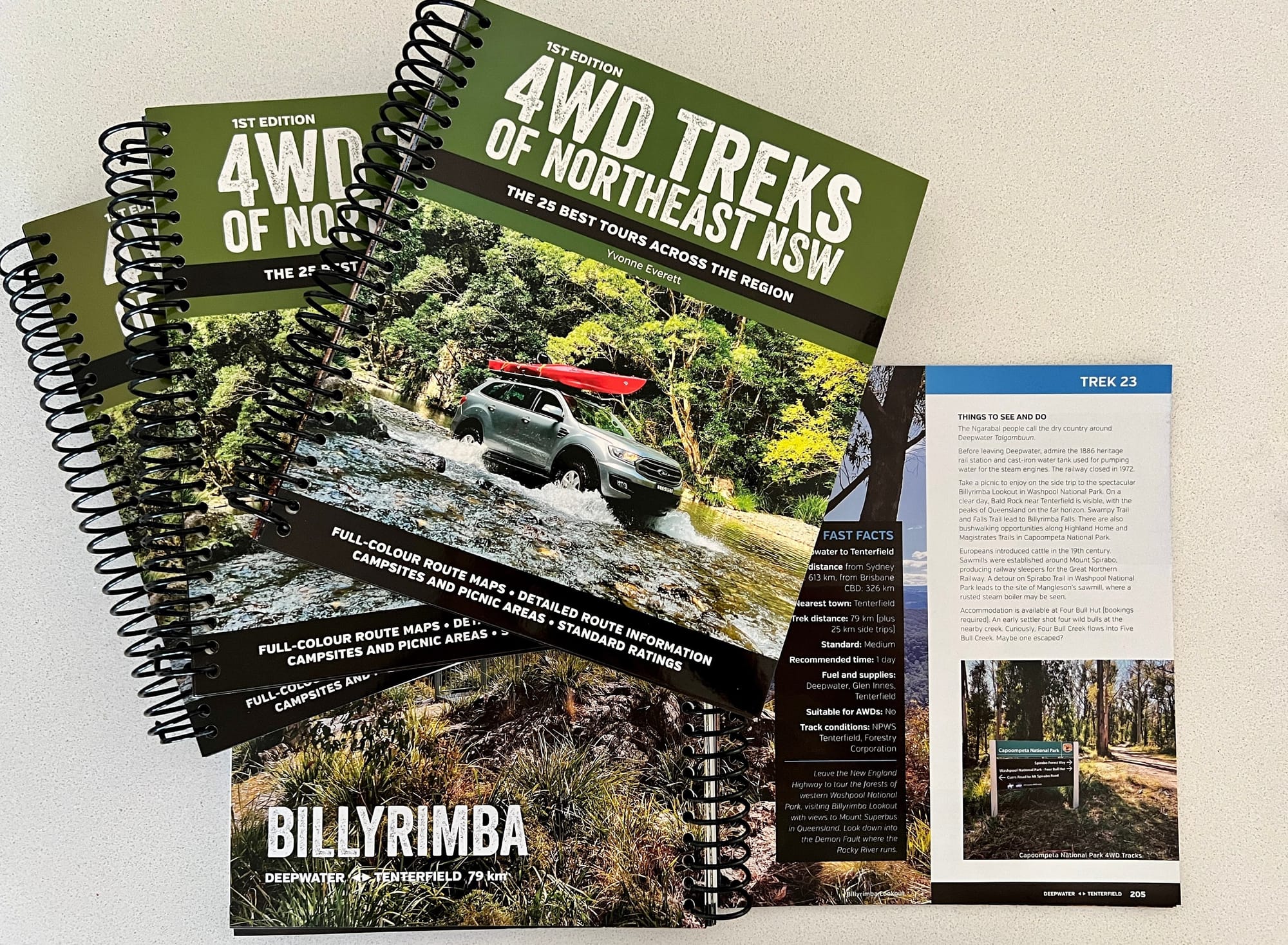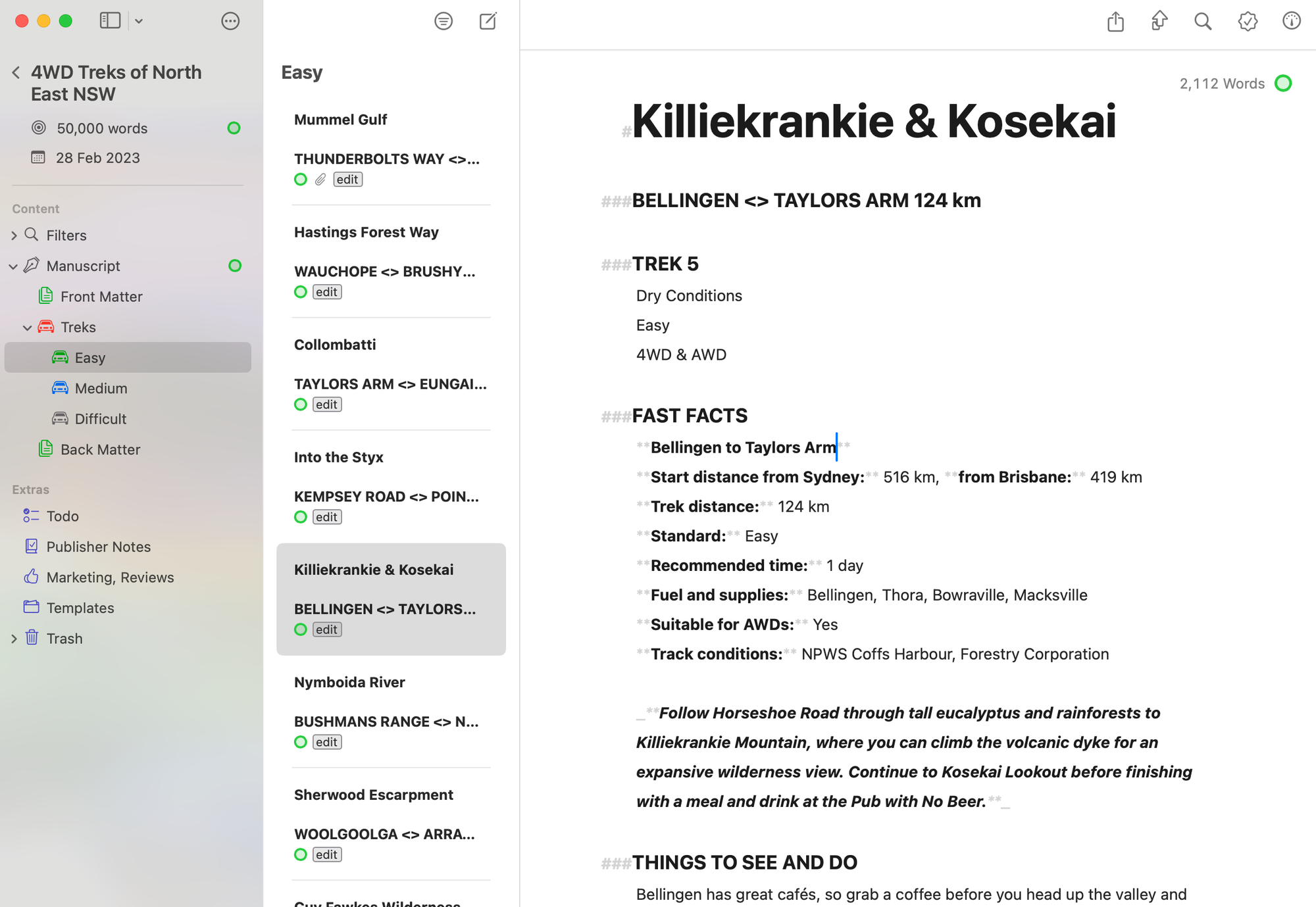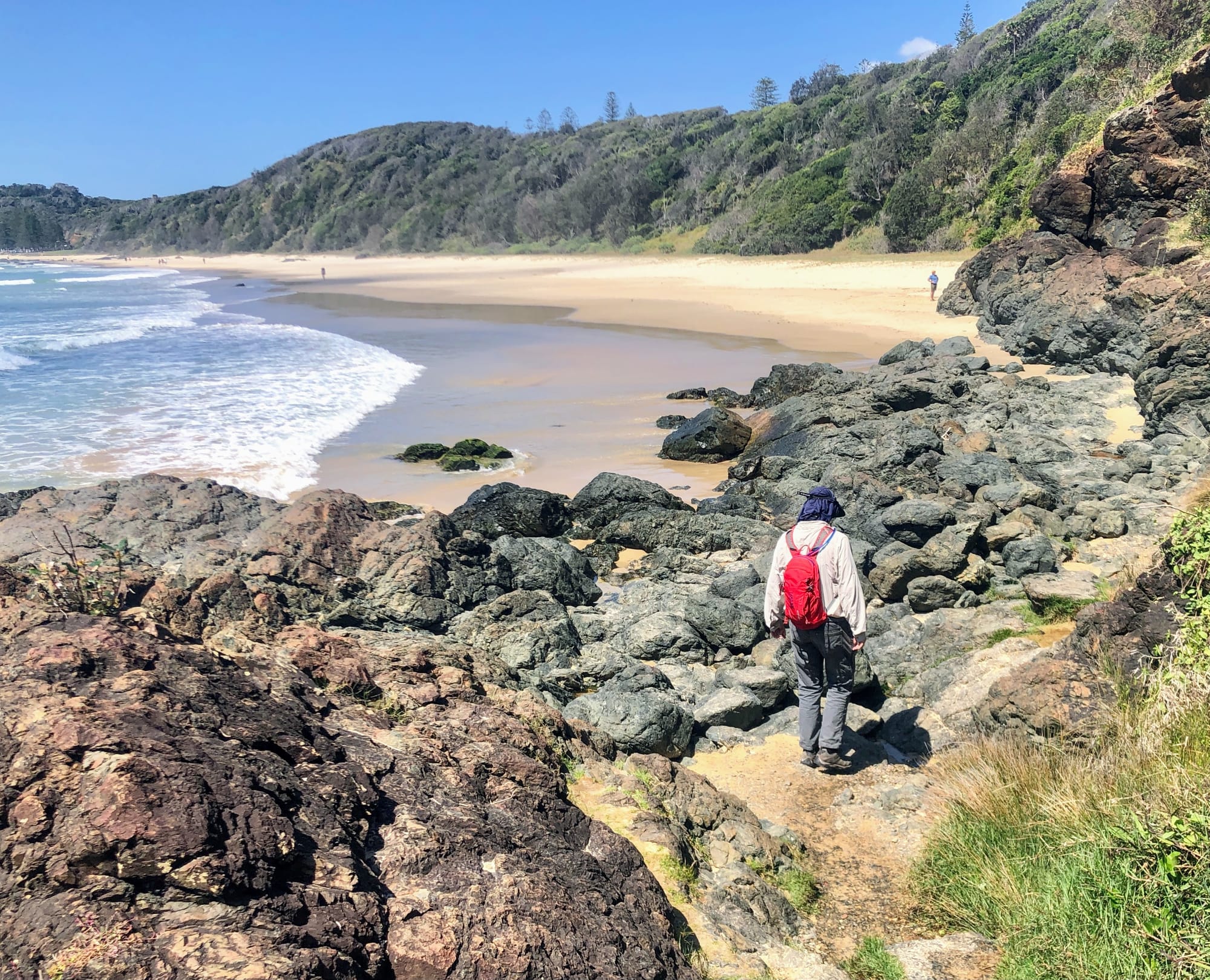Yvonne Everett loves hiking, biking and off-road exploring in Australia. She shares stories of her trails on her website, CoffsTrails, and has published two guidebooks. Yvonne explains how she used Ulysses to meet the complex requirements of authoring a 4WD guidebook.
Please tell us something about yourself
For many years, I worked in Sydney at a desk job in technology and financial services. Then, in late 2019, I made my escape from corporate life, moving to northern New South Wales.
I’ve always loved being outside, exploring nature on foot, by bike or 4WD vehicle. I’m fortunate to live in a glorious part of the world, with sunny beaches, rainforests, waterfalls, gorges, mountains – everything a girl needs to be happy!

Tell us about your books – what inspired you to write a guidebook?
I had big plans for 2020 that involved riding a motorcycle from London, UK to Magadan, Russia. Well, of course, we all know what happened in 2020.
So instead, as a lockdown consolation prize of a sort, I decided to explore all the hidden corners of my new home at Coffs Harbour. I set up a website (CoffsTrails) and challenged myself to find 15 interesting local walks. Soon 15 became 25 then 50 walks, and led to a guidebook publishing contract with Woodslane.

The thought of using Word to write a book was off-putting, I’d left the office behind in Sydney. Google research led me to Ulysses, and I quickly fell in love with the clean interface, efficiency, and simplicity of Markdown, all of which help me to focus. And I love how I can work seamlessly across my iPhone, iPad and Mac, choosing the right tool for the time and place.
To my surprise, Best Walks of NSW Mid North Coast sold well, and Woodslane offered me a second publishing contract for a 4WD touring guidebook.

With navigation apps now available, aren’t guidebooks dead?
Well, no. An overwhelming deluge of user-generated content litters the internet, who do you trust, how do you make sense of it all?
A guidebook is researched and curated, offering a more focussed experience than surfing from TripAdvisor to AllTrails before spiralling off into a clickbait maelstrom that drags you under. Also, you can pop a physical guidebook in your backpack or glove-box, and it doesn’t require battery power or cell-coverage.
What are the challenges of writing a guidebook?
The key challenge is combining factual accuracy and clarity of instruction with entertaining story telling to offer the reader a deeper experience of their journey.
The process starts with research and field work. There are 40 hikes in my walking book, and 25 treks in the 4WD book, but I explored many more so that I was able to cull some and curate the best. I walked every trail, and drove every 4WD route, snapping reference photos and making field notes on Ulysses on my phone along the way.
Both books are part of a popular series of guidebooks, so the format was pre-determined. Of the two, 4WD Treks of northeast NSW was the more complex, with over 50 tables, 250 photographs, and many maps. Plus, of course, over 50,000 words! Fortunately, Ulysses released their tables feature on the day that I sat down to start writing! I would have been lost without it.
How did Ulysses help you with the writing process?
Ulysses excels at tools for organising your work. I used a project for each book to track the overall word count, with the publisher’s deadline set. Within a group called “Manuscript”, subgroups support the book structure – front matter, routes, back matter. Grouping my route content by region and grade helped me ensure my selection was balanced. Within Extras, I grouped my notes: to-do list, publisher, marketing.
Each of the walks and 4WD treks follow a set template. Material sheets are useful as the word count is not included. I used a material sheet with the template laid out, and duplicated that when I started writing up each new route. Colour-coded keywords and filters helped me keep track of the state of each piece of content – research, draft, final edit.
XXX served as a placeholder for missing data (distance or price, for example) that I still needed to complete. I also made use of bookmarks for text that needed to be followed up or cross-referenced. The split screen feature was useful for completing a table of “Treks at a glance” at the front of the book.
With each book, I have refined my Ulysses processes, and found some new or previously overlooked feature that I can learn for my next project.

What other apps and tools did you use, and how did they help?
For planning routes and tracking when out exploring, I used GaiaGPS. My tracks and waypoints were then shared with the cartographer, who produced the final map designs for the book in QGIS. I used Google Photos to organise hundreds of images in albums, from which the final selection was made by the book designer.
An author’s job does not stop once the writing is done, tell us more about what came next?
First, the book needs to be sent to the publisher. Woodslane required the content in a Word document. With some help from Ulysses excellent support staff, I found it wasn’t difficult to set up a custom Ulysses style sheet that was close to the publisher’s required style. Styling the tables was perhaps the main challenge, particularly the “Campsites” table, which had 15 columns with an icon font in the header row.
Once the book was at the printers, Ulysses was pressed into service again to help prepare for marketing the book. I selected snippets of book text, photos, and video to publish on my blog and social media channels. I prepared press releases and media pitches, and copy for a book landing page on my website.
Somehow, gremlins always sneak in, despite many rounds of editing and proofreading, so I keep an errata sheet in Ulysses for tracking fixes for the next print run.

What are you working on now?
I’ve set myself a new creative challenge that requires video-making and editing. A good video starts with a storyboard and script, of course. I’m hoping Ulysses can help me with that too, because Ulysses is my favourite app for planning and organising my thoughts.
Visit CoffsTrails.com to find out more about Yvonne’s books and adventures. You can also follow her on Instagram.
